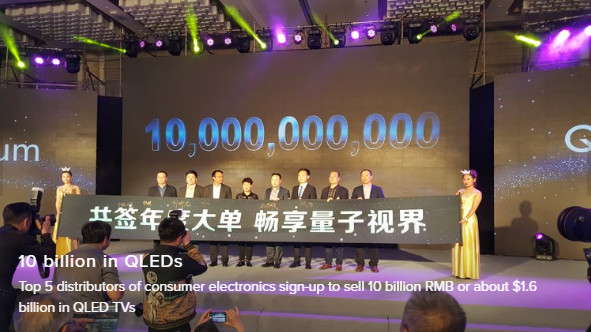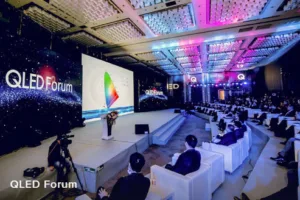Samsung has been a proponent of using the QLED name to represent a display category – namely, displays that integrate quantum dots in any architecture whether photoluminescent or electroluminescent. This desire got a boost recently at the QLED Forum, held in Beijing. The event was used to introduce the QLED Alliance, which seems to be a China-focused alliance, but one which is dedicated to advancing the QLED category. (Samsung To Reveal QLED Alliance?)
credit: Nanosys
Notably, TV makers Hisense and TCL joined the alliance. These brands will now call TVs using quantum dots QLED TVs as well. In addition, the top five Chinese retailers joined the alliance suggesting a big messaging push and support at retail for QLED as well (GOME Electrical Appliances, Suning Commerce Group, JD.com, Five Star and Sundan). Finally, Peking University, Tsinghua University and China Electronics Chamber of Commerce (CECC) joined the alliance too.
CECC is a major trade organization not unlike CTA in the US. At the event, the organization said that it expects 6M QLED TVs will be sold in China in 2017, rising to 18M by 2018. The five retailers made a further commitment to sell 10B RMB ($1.45 billion) in QLED TV value, although the time frame was not clear.
 credit: Nanosys
credit: Nanosys
Others are optimistic for the QLED category vs. OLEDs as well. For example, Display Supply Chain Consultants predicts OLED fab capacity will limit sales of TV panels to around 6.8M panels by 2021, but QLED TV panels will rise to 95M by 2021.
Touch Research Consultants is even more bullish, but sees a similar big gap in sales. They predict QLED TVs will continue to lead in this competition reaching over 140M units in 2022, while OLED TV will only reach 14M.

